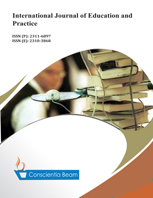A Second Order Confirmatory Factor Analysis of the Digital Transformation for a Distance Education Institution
DOI:
https://doi.org/10.18488/61.v10i4.3224Abstract
In the current times, very little attention is paid on measuring the performance of digital transformation in educational institutions so that it can run sustainably. This study aimed to create an appropriate instrument in measuring digital transformation in educational institutions, especially distance education institution. The study used a quantitative approach and collected data from 402 Universitas Terbuka students of 5 faculties; the Faculty of Economics (FE), Faculty of Law, Social and Political Sciences (FLSPS), Faculty of Teacher Training and Education (FTTE), Faculty of Science and Technology as well as the Graduate Program. An online questionnaire was used to collect data related to digital transformation applied by the Universitas Terbuka as a distance education institution using the random sampling method. The data were analyzed using a Second Confirmatory Factor Analysis (CFA) to verify the instrument's factor structure based on the model developed in the study. The results of the study show evidence that the five indicators consist of a) Strategy and institutional governance, b) Curriculum and delivery methods, c) Assessment, d) Staff support and professional development, and e) Infrastructure and resources had good goodness of fit criteria and creating a valid and reliable instrument to measure the performance of digital transformation in distance education institution.





